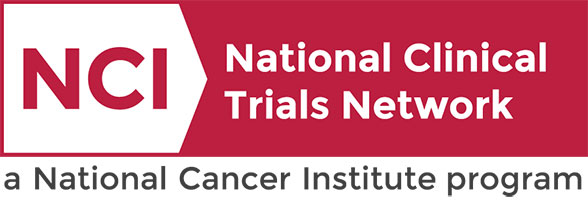Patient Search
 |
 |
|
KaCrole Higgins was diagnosed with breast cancer in 2020. “In May 2020, I found a lump in my breast. I cried. By June, it was diagnosed as breast cancer, triple positive, stage 1A. While getting this cancer diagnosis was devastating, it also became an opportunity. Suddenly, the cancer gave me clarity. It gave me clarity about what was important, what was good in my life, what was toxic in my life, and what I needed to do.” Click below to read more of KaCrole’s story |
If Landon Ryan had been diagnosed with bilateral retinoblastoma 10, 20 or 30 years ago, she might not be here today with nearly perfect vision.Thanks to recent improvements in the treatment for this rare form of cancer that almost exclusively affects children under the age of 5, the diagnosis had the power to change Landon’s life when she was 11 months old, but not to take it — or her eyesight. Click below to learn more about Landon and her story. https://momentum.vicc.org/2022/04/brighter-outlook/ |
LCH-IV, International Collaborative Treatment Protocol for Children and Adolescents With Langerhans Cell Histiocytosis
Multiple Cancer Types
The LCH-IV is an international, multicenter, prospective clinical study for pediatric Langerhans Cell Histiocytosis LCH (age \< 18 years).
Miscellaneous,
Pediatrics
III
Pastakia, Devang
NCT02205762
VICCPED2231
Neoadjuvant Chemotherapy, Excision And Observation vs Chemoradiotherapy For Rectal Cancer
This study is being done to answer the following questions: Is the chance of rectal cancer responding the same if chemotherapy alone is given before limited surgery compared to chemotherapy and radiation therapy given together before limited surgery? If radiation therapy is not given, is quality of life better?
Not Available
III
Eng, Cathy
NCT06205485
SWOGGICO32
Study of Targeted Therapy vs. Chemotherapy in Patients With Thyroid Cancer
Thyroid
Thyroid
This phase III trial compares the effect of cabozantinib versus combination dabrafenib and trametinib for the treatment of patients with differentiated thyroid cancer that does not respond to treatment (refractory) and which expresses a BRAF V600E mutation. Cabozantinib is in a class of medications called receptor tyrosine kinase inhibitors. It binds to and blocks the action of several enzymes which are often over-expressed in a variety of tumor cell types. This may help stop or slow the growth of tumor cells and blood vessels the tumor needs to survive. Dabrafenib is an enzyme inhibitor that binds to and inhibits the activity of a protein called B-raf, which may inhibit the proliferation of tumor cells which contain a mutated BRAF gene. Trametinib is also an enzyme inhibitor. It binds to and inhibits the activity of proteins called MEK 1 and 2, which play a key role in activating pathways that regulate cell growth. This may inhibit the growth of tumor cells mediated by these pathways. The usual approach for patients with thyroid cancer is targeted therapy with dabrafenib and trametinib. This trial may help researchers decide which treatment option (cabozantinib alone or dabrafenib in combination with trametinib) is safer and/or more effective in treating patients with refractory BRAF V600E-mutated differentiated thyroid cancer.
Thyroid
III
Choe, Jennifer
NCT06475989
ECOGHNEA3231
Testing the Use of Combination Therapy in Adult Patients With Newly Diagnosed Multiple Myeloma, the EQUATE Trial
Multiple Myeloma
Multiple Myeloma
This phase III trial compares the combination of four drugs (daratumumab, bortezomib, lenalidomide and dexamethasone) to the use of a three drug combination (daratumumab, lenalidomide and dexamethasone). Bortezomib may stop the growth of cancer cells by blocking some of the enzymes needed for cell growth. Chemotherapy drugs, such as lenalidomide, work in different ways to stop the growth of cancer cells, either by killing the cells, by stopping them from dividing, or by stopping them from spreading. Daratumumab is a monoclonal antibody that may interfere with the ability of cancer cells to grow and spread. Anti-inflammatory drugs, such as dexamethasone lower the body's immune response and are used with other drugs in the treatment of some types of cancer. Adding bortezomib to daratumumab, lenalidomide, and dexamethasone may be more effective in shrinking the cancer or preventing it from returning, compared to continuing on daratumumab, lenalidomide, and dexamethasone.
Multiple Myeloma
III
Baljevic, Muhamed
NCT04566328
ECOGPCLEAA181
An Adjuvant Endocrine-based Therapy Study of Camizestrant (AZD9833) in ER+/HER2- Early Breast Cancer (CAMBRIA-2)
This is a Phase III open-label study to assess if camizestrant improves outcomes compared to standard adjuvant endocrine therapy for patients with ER+/HER2- early breast cancer with intermediate-high or high risk for disease recurrence who completed definitive locoregional therapy (with or without chemotherapy). The planned duration of treatment in either arm within the study will be 7 years.
Not Available
III
Not Available
NCT05952557
VICC-DTBRE23083
Bevonescein for Intra-Operative Nerve Visualization in Head and Neck Surgery
Multiple Cancer Types
This protocol describes prospective, open-label, blinded, randomized controlled, multicenter pivotal studies to evaluate ALM-488.
Head/Neck,
Thyroid
III
Rohde, Sarah
NCT05377554
VICCHN2258
Testing the Addition of Total Ablative Therapy to Usual Systemic Therapy Treatment for Limited Metastatic Colorectal Cancer, The ERASur Study
This phase III trial compares total ablative therapy and usual systemic therapy to usual systemic therapy alone in treating patients with colorectal cancer that has spread to up to 4 body sites (limited metastatic). The usual approach for patients who are not participating in a study is treatment with intravenous (IV) (through a vein) and/or oral medications (systemic therapy) to help stop the cancer sites from getting larger and the spread of the cancer to additional body sites. Ablative means that the intention of the local treatment is to eliminate the cancer at that metastatic site. The ablative local therapy will consist of very focused, intensive radiotherapy called stereotactic ablative radiotherapy (SABR) with or without surgical resection and/or microwave ablation, which is a procedure where a needle is temporarily inserted in the tumor and heat is used to destroy the cancer cells. SABR, surgical resection, and microwave ablation have been tested for safety, but it is not scientifically proven that the addition of these treatments are beneficial for your stage of cancer. The addition of ablative local therapy to all known metastatic sites to the usual approach of systemic therapy could shrink or remove the tumor(s) or prevent the tumor(s) from returning.
Not Available
III
Not Available
NCT05673148
VICC-NTGIT23268
Study to Compare Axicabtagene Ciloleucel With Standard of Care Therapy as First-line Treatment in Participants With High-risk Large B-cell Lymphoma
Lymphoma
Lymphoma
The goal of this clinical study is to compare the study drug, axicabtagene ciloleucel, versus standard of care (SOC) in first-line therapy in participants with high-risk large B-cell lymphoma.
Lymphoma
III
Jallouk, Andrew
NCT05605899
VICCCTT2298
Accelerated v's Standard BEP Chemotherapy for Patients With Intermediate and Poor-risk Metastatic Germ Cell Tumours
Germ Cell (Pediatrics)
Germ Cell (Pediatrics)
The purpose of this study is to determine whether accelerated BEP chemotherapy is more effective than standard BEP chemotherapy in males with intermediate and poor-risk metastatic germ cell tumours.
Germ Cell (Pediatrics)
III
Borinstein, Scott
NCT02582697
COGAGCT1532
A Study of Treatment for Medulloblastoma Using Sodium Thiosulfate to Reduce Hearing Loss
This phase III trial tests two hypotheses in patients with low-risk and average-risk medulloblastoma. Medulloblastoma is a type of cancer that occurs in the back of the brain. The term, risk, refers to the chance of the cancer coming back after treatment. Subjects with low-risk medulloblastoma typically have a lower chance of the cancer coming back than subjects with average-risk medulloblastoma. Although treatment for newly diagnosed average-risk and low-risk medulloblastoma is generally effective at treating the cancer, there are still concerns about the side effects of such treatment. Side effects or unintended health conditions that arise due to treatment include learning difficulties, hearing loss or other issues in performing daily activities. Standard therapy for newly diagnosed average-risk or low-risk medulloblastoma includes surgery, radiation therapy, and chemotherapy (including cisplatin). Cisplatin may cause hearing loss as a side effect. In the average-risk medulloblastoma patients, this trial tests whether the addition of sodium thiosulfate (STS) to standard of care chemotherapy and radiation therapy reduces hearing loss. Previous studies with STS have shown that it may help reduce or prevent hearing loss caused by cisplatin. In the low-risk medulloblastoma patients, the study tests whether a less intense therapy (reduced radiation) can provide the same benefits as the more intense therapy. The less intense therapy may cause fewer side effects. Radiation therapy uses high energy x-rays to kill tumor cells and shrink tumors. Cisplatin is in a class of medications known as platinum-containing compounds. It works by killing, stopping or slowing the growth of cancer cells. The overall goals of this study are to see if giving STS along with standard treatment (radiation therapy and chemotherapy) will reduce hearing loss in medulloblastoma patients and to compare the overall outcome of patients with medulloblastoma treated with STS to patients treated without STS on a previous study in order to make sure that survival and recurrence of tumor is not worsened.
Not Available
III
Not Available
NCT05382338
VICC-NTPED23124


